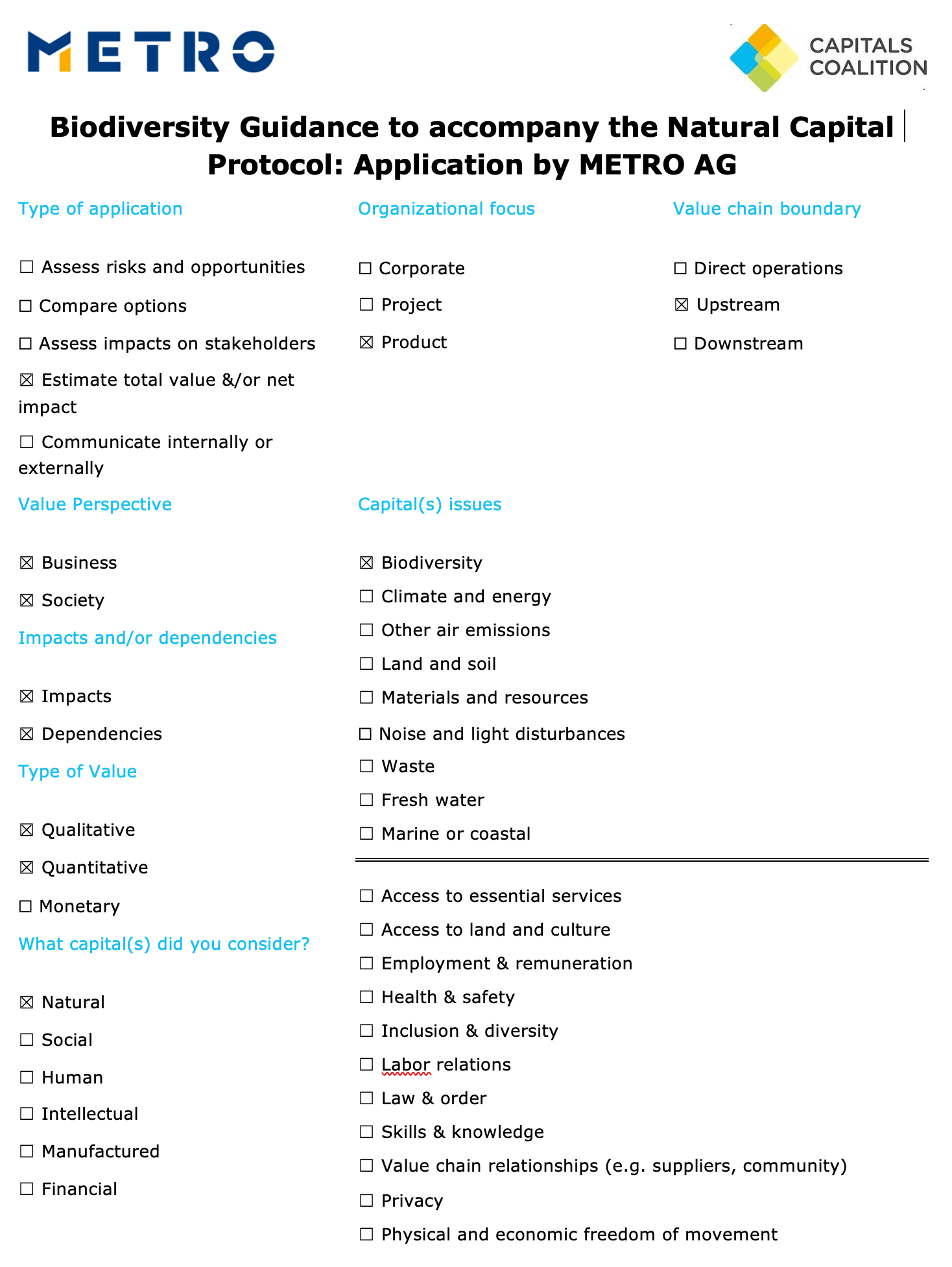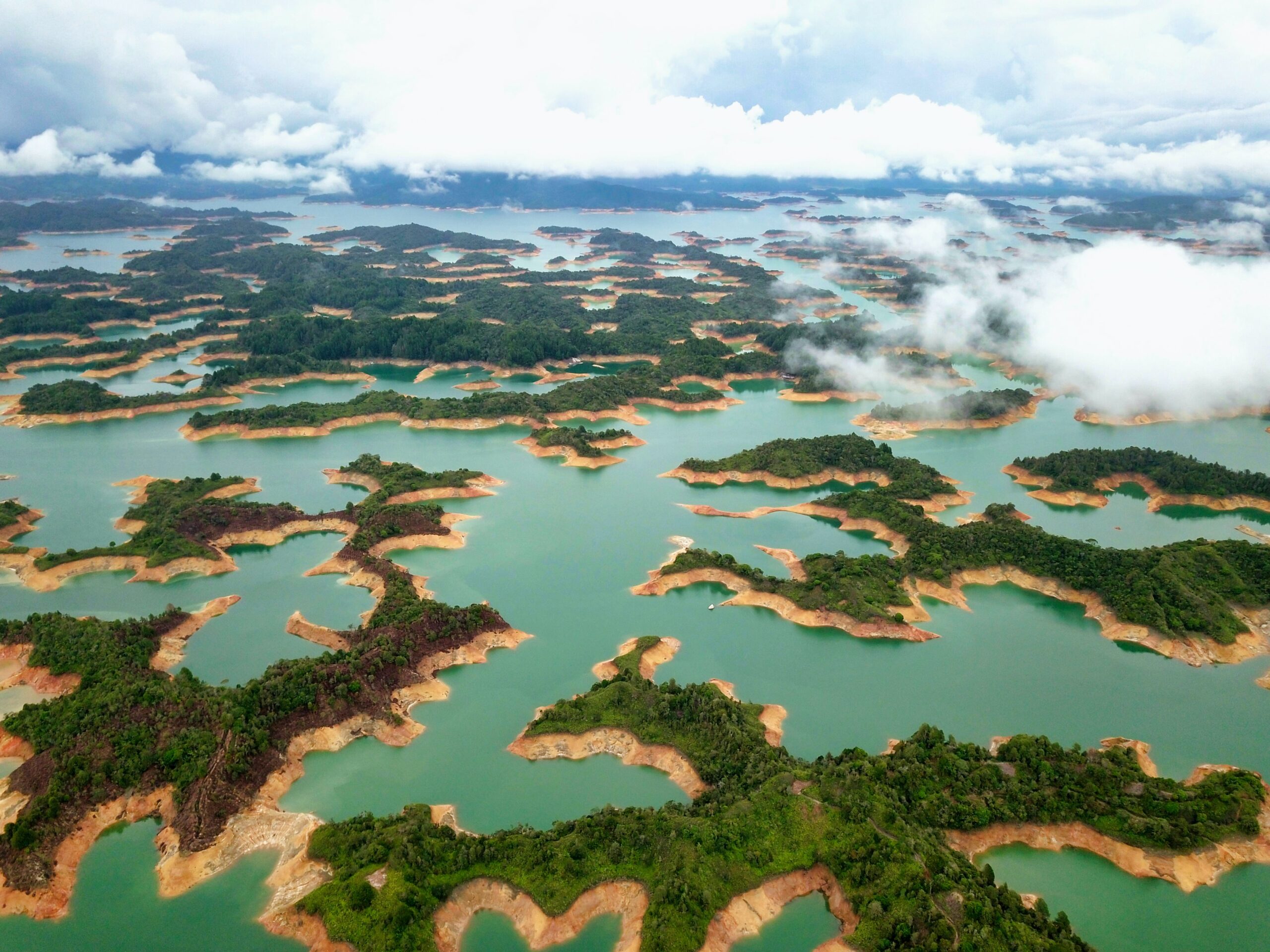The organization in brief:
METRO is a leading international wholesale company with food and non-food assortments that specializes in serving the needs of hotels, restaurants and caterers (HoReCa) as well as independent traders. Around the world, METRO has some 16 million customers who can choose whether to shop in one of the large-format stores, order online and collect their purchases at the store or have them delivered. Sustainability is a key pillar of METRO’s business. METRO has been the European sector leader in the Dow Jones Sustainability Index. The company operates in 34 countries and employs more than 100,000 people worldwide. In financial year 2018/19, METRO generated sales of €27.1 billion.
Why was this undertaken?
Piloting the Navigation Tool – as part of the Biodiversity Guidance to accompany the Natural Capital Protocol – was a great opportunity for METRO to understand how to make their current natural capital assessment more biodiversity-inclusive, while being supported by the Cambridge Conservation Initiative (CCI) and the Capitals Coalition.
Although METRO’s ‘Sustainable Value Creation’ model provides a framework on sustainability accounting, the Biodiversity Guidance (and associated tools) will help METRO gain an understanding of biodiversity and its business relevant connections first-hand. By reviewing the Navigation Tool, METRO seeks to understand tools available to complete their biodiversity-inclusive natural capital assessment, and understand the data needs before starting the process.
For environmental challenges, such as climate change, it is important to gain a clear understanding of their correlations with biodiversity in supply chains, and to internalize the effects as this supports the identification of potential risks and opportunities for future business.
What was the scope?
The scope of the piloting was to specifically identify the biodiversity impacts and dependencies of METRO’s business activities in the upstream supply chain of citrus fruits sourced by their Valencia Trading Office in Spain based on an existing natural capital assessment. Initially, the outcome of using the Navigation Tool served as an internal information tool for management decisions targeted at general managers as well as buyers. After piloting is completed, the outcomes could also form a basis for collaboration with suppliers as, through the knowledge we have gained of how their activities directly relate to biodiversity. This is important as having visibility of impacts and dependencies is a pre-requisite for risk mitigation in commodity sourcing.
How did you measure and value your impacts and/or dependencies?
Until now biodiversity impacts and dependencies have been identified but not measured by METRO. Using the Navigation Tool guided us through a series of questions associated with Steps 5 and 6 of the Measuring and Valuing Guidance. This resulted in the identification of suitable biodiversity measurement tools and approaches. For example, the Biodiversity Impact Metric (BIM) by the Cambridge Institute for Sustainability Leadership (CISL) and ENCORE produced by UN Environment Programme World Conservation Monitoring Centre (UNEP-WCMC) in collaboration with the Natural Capital Finance Alliance (UNEP-FI and Global Canopy).
What were the results?
By using the Navigation Tool, METRO was able to identify biodiversity impacts and dependencies and the resources available for this process before starting the assessment. It became possible to detect potential impacts and dependencies related to biodiversity and reflect on the consequences. For example, the sourcing of fruits depends on pollination which is linked to the population of pollinators. Therefore, a decline in pollinator populations will affect the amount of harvest available to METRO. Through the use of the Navigation tool, METRO also understood tools and approaches were available to quantify identified impacts and dependencies on biodiversity. This gave METRO an overview of the data required before starting their biodiversity-inclusive natural capital assessment.
Note, however, that actual values have not been calculated at this stage.
What was the outcome of the assessment, and what impact did it have?
Piloting the Navigation Tool provided METRO with a profound understanding of their potential impacts and dependencies, which enabled them to raise awareness within the company. As soon as METRO identified the biodiversity-related natural capital impacts and dependencies linked to its business activities a clearer picture of the business’ relationship with biodiversity developed and increased awareness on this topic. It was also recognized that the Navigation Tool helps businesses identify activities linked to biodiversity impacts and dependencies that may need to be measured, and refers the user to guidance on how to do so. It is not necessary to have already measured biodiversity impacts and dependencies prior to using the tool.
What were the learnings?
Although the identification of biodiversity-related impacts and dependencies is the basis for awareness raising, the required steps to measure and value these plays an important role in managing them. The steps required to complete this process is fairly resource-intensive, but the results are highly valuable for different actors across METRO’s supply chain. By seeking the support of experts and collaborating with partners along the supply chain, this would help METRO manage the additional expense.
Next steps:
METRO’s experience provides a good basis to work through the Navigation Tool with other commodities to identify specific biodiversity hotspots along their supply chains.
In addition, the next step for raising awareness will be to ensure internal and external actors along the supply chain (e.g. buyers, suppliers, packagers and growers) feel responsible for the identified impacts and dependencies, and act accordingly (i.e. internalizing specific effects identified). It is necessary for companies to measure biodiversity-related impacts and dependencies to understand the status quo and the risks involved if a company does not act on what has been identified.
After piloting the Navigation Tool, METRO can continue to improve their management of biodiversity-related issues.
![]()













